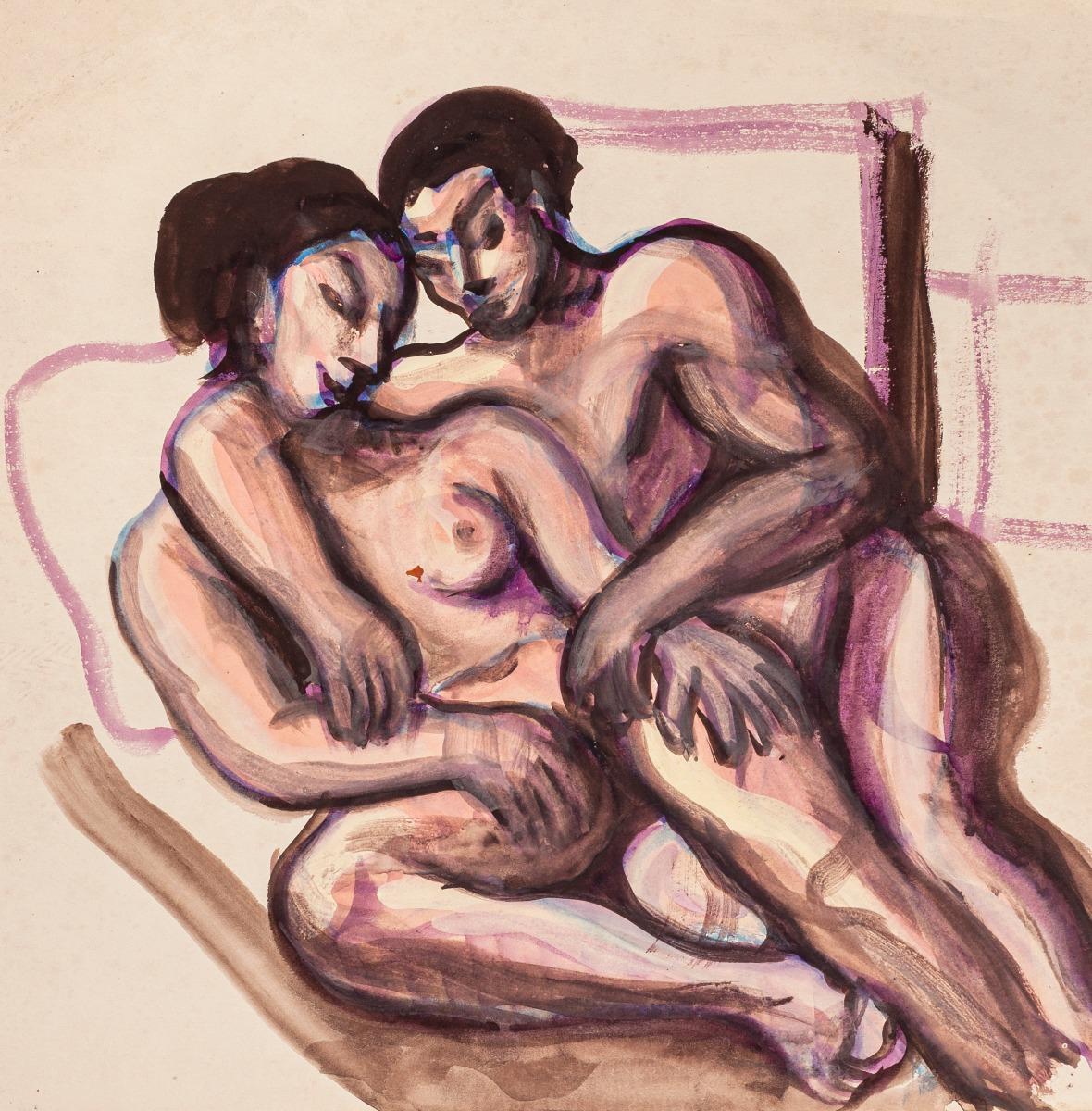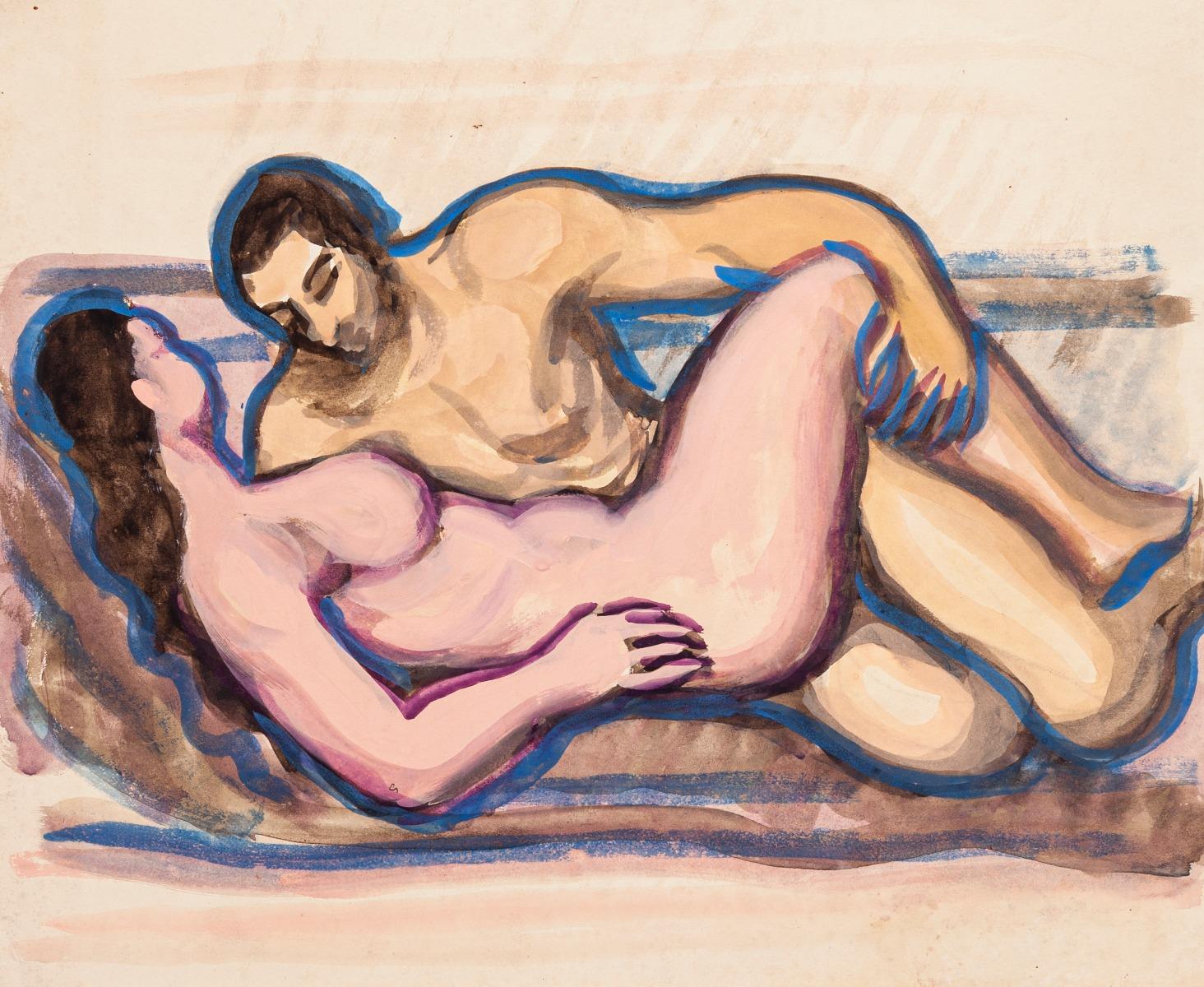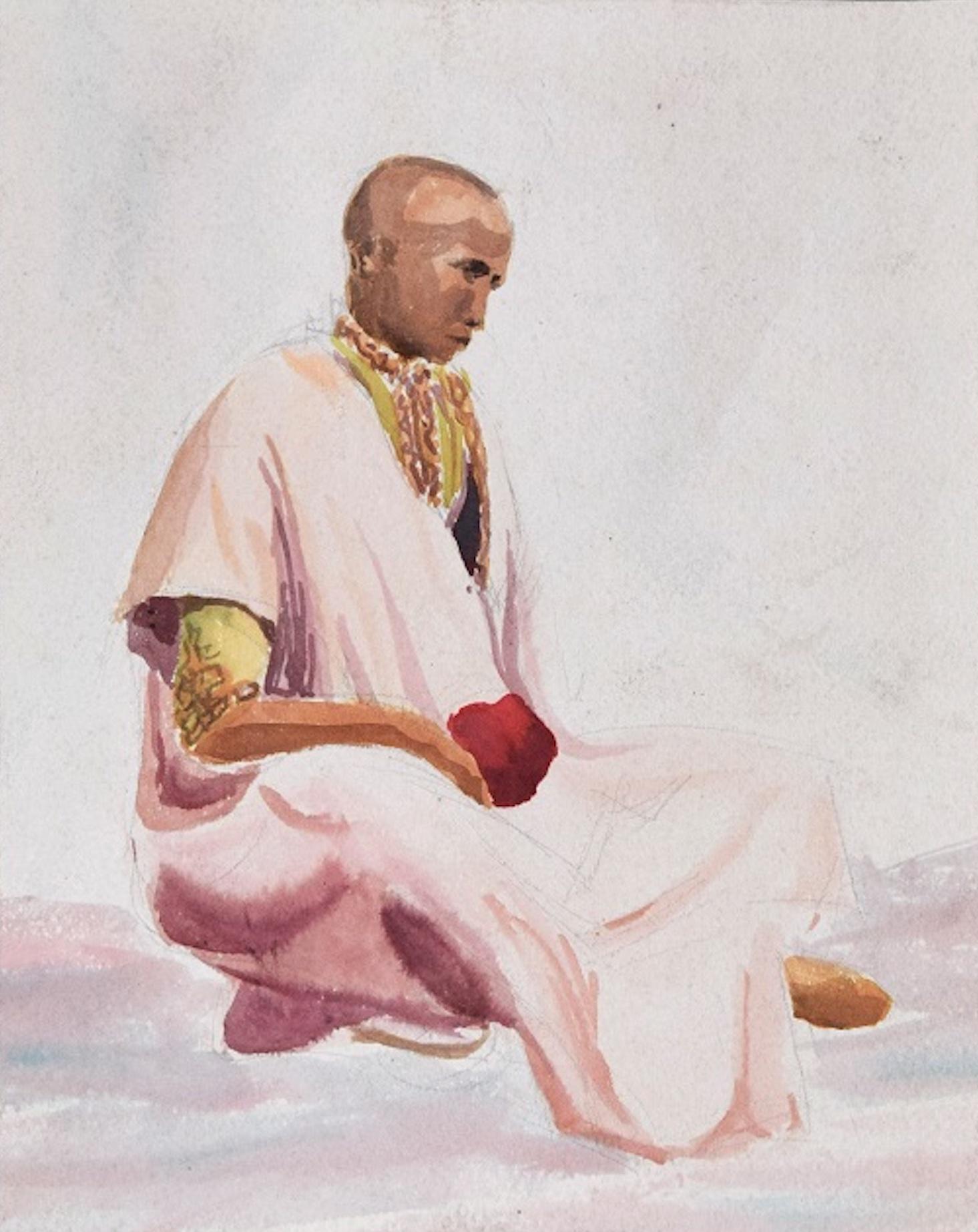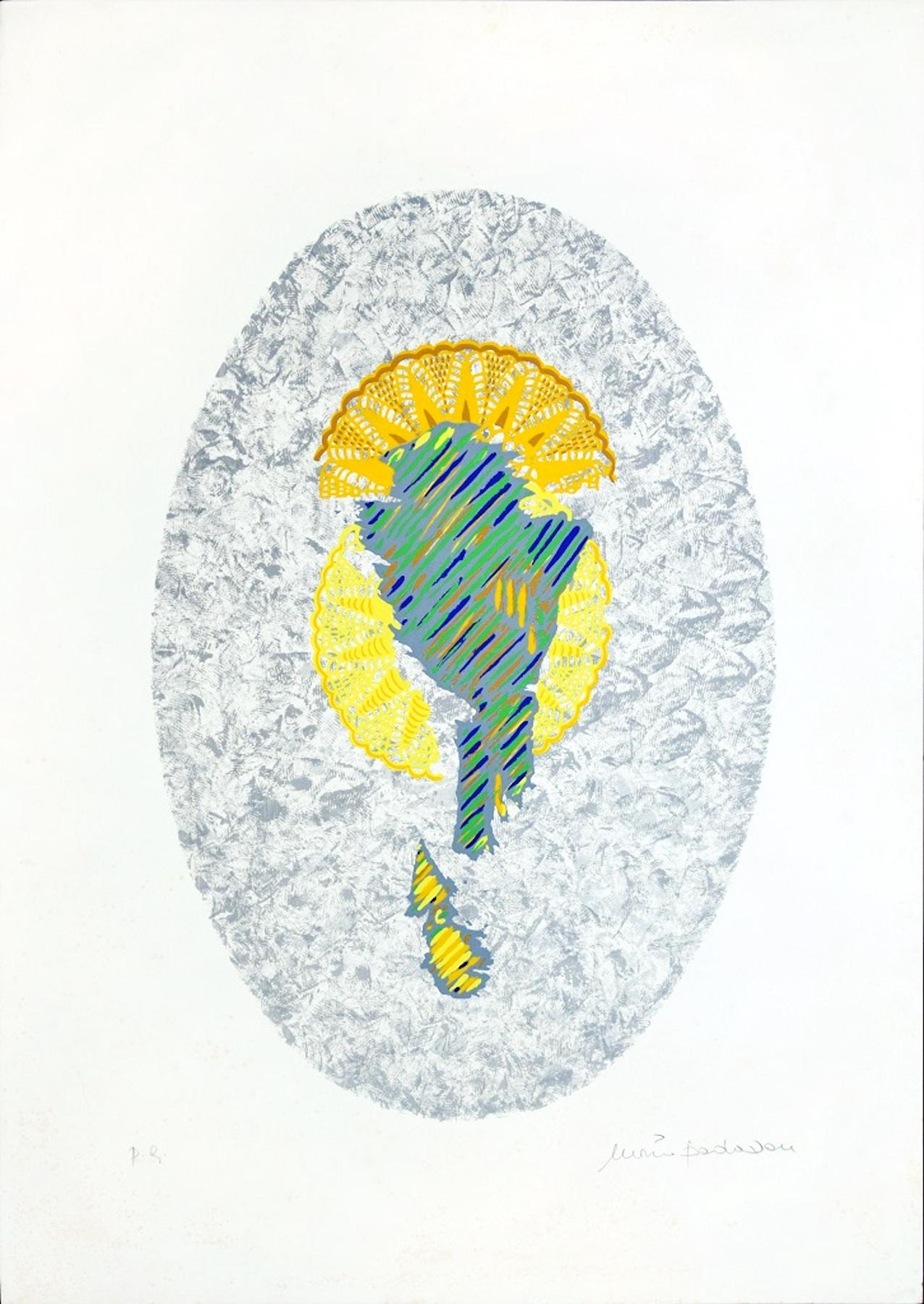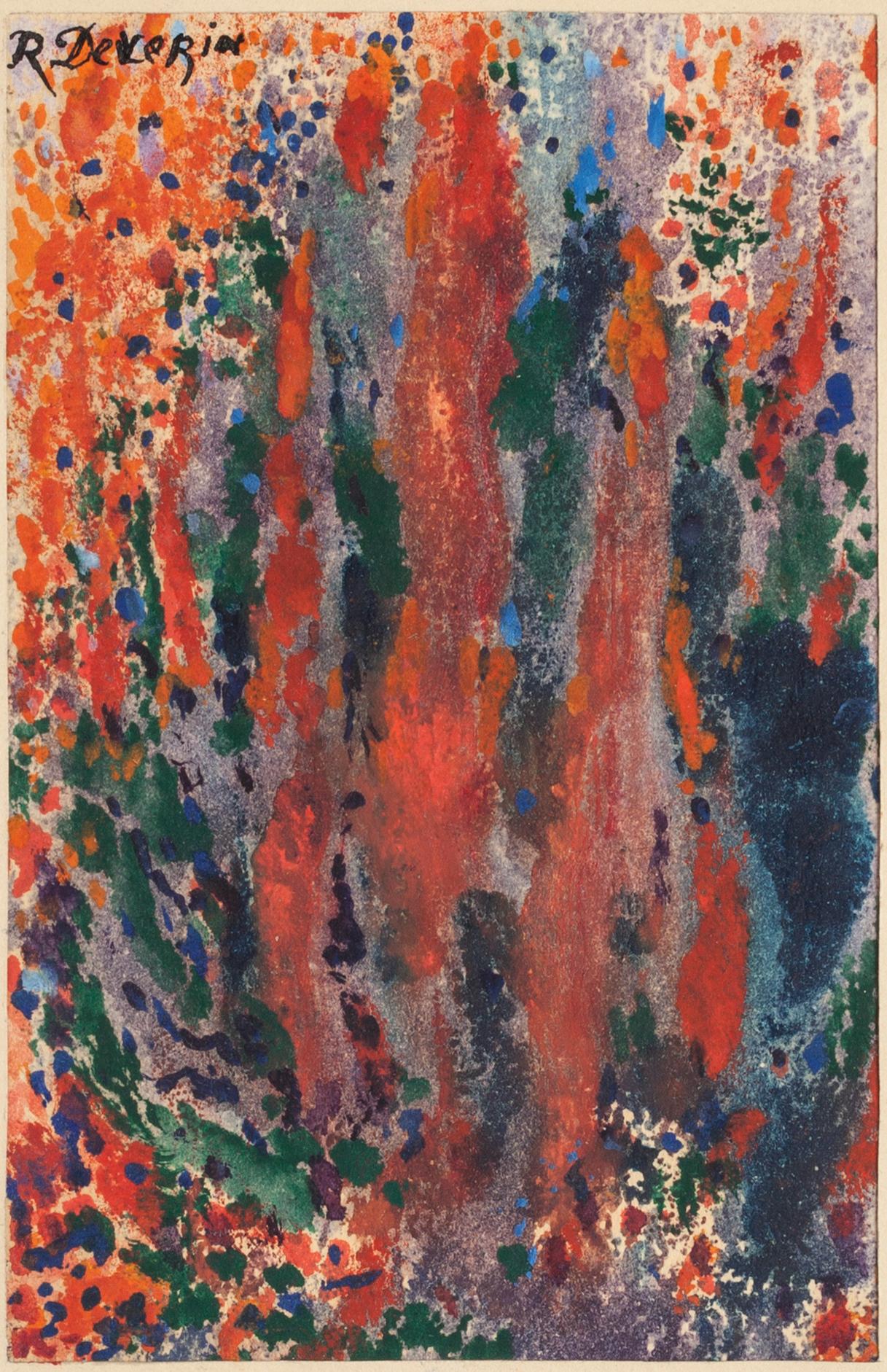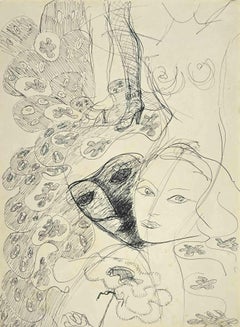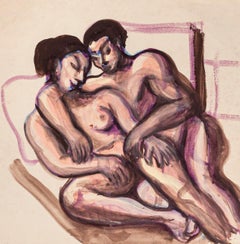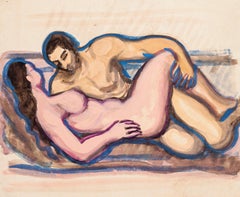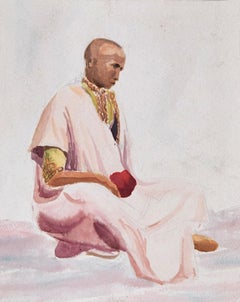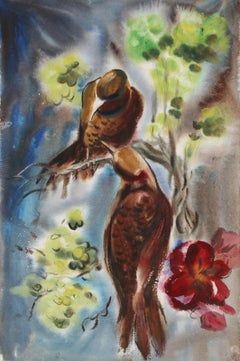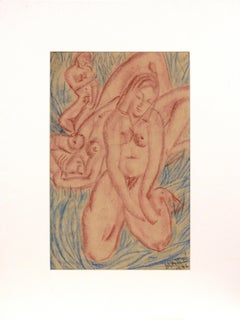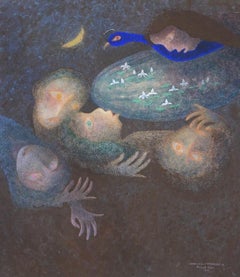Items Similar to Peacocks - Original Mixed Media on Paper by Lucie Navier - 1930s
Want more images or videos?
Request additional images or videos from the seller
1 of 2
Lucie NavierPeacocks - Original Mixed Media on Paper by Lucie Navier - 1930s1930s
1930s
$379.97
£287.17
€320
CA$530.78
A$577.44
CHF 304.70
MX$6,944.68
NOK 3,843.73
SEK 3,577.20
DKK 2,437.67
About the Item
Peacocks is a painting realized by Lucie Navier in the 1930s.
Original tempera painting and pastels on cardboard.
Hand-signed by the artist on the lower right corner in red painting "Lucie Navier".
Good conditions.
Mixed composition realized when the artist was very young. The background is realized with a dark pastel and, in the center of the composition there are two figures surrounded by two stylized peacocks.
Lucie Navier (1910-1996). In the 1940s Lucie Navier lived in the region just west of Paris, in the town of Orgerus, Ile-de-France.
The artwork has been relized in the 1920s by the French artist Lucie Navier (1910-1996). In the 1940s Lucie Navier lived in the region just west of Paris, in the town of Orgerus, Ile-de-France.
- Creator:Lucie Navier (1910 - 1996)
- Creation Year:1930s
- Dimensions:Height: 12.6 in (32 cm)Width: 9.85 in (25 cm)Depth: 0.04 in (1 mm)
- Medium:
- Movement & Style:
- Period:
- Framing:Framing Options Available
- Condition:Insurance may be requested by customers as additional service, contact us for more information.
- Gallery Location:Roma, IT
- Reference Number:Seller: M-1018641stDibs: LU65034552561
About the Seller
4.9
Platinum Seller
Premium sellers with a 4.7+ rating and 24-hour response times
1stDibs seller since 2017
7,836 sales on 1stDibs
Typical response time: 1 hour
- ShippingRetrieving quote...Shipping from: Monaco, Monaco
- Return Policy
More From This Seller
View AllFigures - Pen on Paper by Maurice Rouzee - Mid-20th Century
Located in Roma, IT
Figures is an artwork realized by Maurice Rouzée in the Mid-20th Century.
Pen Drawing.
The artwork is in good conditions .
The artwork is depicted skillfully through confident...
Category
Mid-20th Century Contemporary Figurative Drawings and Watercolors
Materials
Pen
Lovers - Original Drawing in Mixed Media - 1950 ca
Located in Roma, IT
Lovers is an original drawing in mixed media on ivory paper realized in 1950 ca. by an unknown artist of the XX century.
In very good conditions, except for some folding and very sm...
Category
1950s Contemporary Figurative Drawings and Watercolors
Materials
Mixed Media
$290 Sale Price
30% Off
Lovers - Original Drawing in Mixed Media - 1940 ca.
Located in Roma, IT
Lovers is an original drawing in mixed media on ivory paper realized in 1940 ca. by an unknown artist of the XX century.
In very good conditions, except for some folding and very sm...
Category
1940s Figurative Drawings and Watercolors
Materials
Mixed Media
Muslim - Original Mixed Media on Paper by Lucie Navier - 1930s
By Lucie Navier
Located in Roma, IT
Muslim is an original painting realized by Lucie Navier.
Original tempera painting on paper. The sheet is glued on green cardboard (cm 30.5 x 25).
Very good conditions.
Colorful ...
Category
1930s Figurative Paintings
Materials
Ink, Tempera, Watercolor
Peacock - Lithograph by Mario Padovan - 1970s
By Mario Padovan
Located in Roma, IT
Peacock is an original colored lithograph realized by Mario Padovan in the 1970s.
Hand-signed in pencil on the lower right. Artist's proof (p.a. handwritten in pencil on the lower l...
Category
1970s Contemporary More Prints
Materials
Lithograph
Flowers - Original Mixed Media Drawing - 20th Century
Located in Roma, IT
Flowers is an original drawing in mixed media on cardboard, realized by R. Deverin (XX-XXI).
Sheet dimension: 23.6 x 17.5 cm.
The artwork represents a beautiful flowers drawn in m...
Category
20th Century Modern Figurative Drawings and Watercolors
Materials
Mixed Media
You May Also Like
Birds, Impressionist Watercolor by Eve Nethercott
By Eve Nethercott
Located in Long Island City, NY
Eve Nethercott, American (1925 - 2015) - Birds (73), Year: 1957, Medium: Watercolor, Size: 22 in. x 15 in. (55.88 cm x 38.1 cm), Description: Perched on several tufts of greene...
Category
1950s Impressionist Animal Drawings and Watercolors
Materials
Watercolor
Vintage 3 Figurative Nudes in Conté Crayon on Paper (1946) by Matté
Located in Soquel, CA
Vintage 3 Figurative Nudes in Conté Crayon on Paper (1946) Matté
In an indigo blue and burnt orange color palette by French artist Matté (French, 20t...
Category
1940s Nude Drawings and Watercolors
Materials
Paper, Crayon
$760 Sale Price
20% Off
Ikebana Memories-2, Mixed Media on Paper "In Stock"
By Sanat Kar
Located in Kolkata, West Bengal
Sanat Kar - Ikebana Memories-2
22 x 19 inches (unframed size)
Mixed Media on Paper
1991
Style: Majority of Sanat Kar's works are surrealistic and have a curious dream-like appearan...
Category
1990s Modern Figurative Paintings
Materials
Paper, Mixed Media, Tempera
The Dove and the Snake, 1933 - Original Lithograph
By Jacques Camus
Located in Paris, IDF
Jacques Camus
The Dove and the Snake, 1933
Original lithograph and stencil
Unsigned
On paper 39 x 29 cm (c. 15.3 x 11.4 inch)
INFORMATION : This lithograph is part of the "Idées" p...
Category
1930s Art Deco Figurative Prints
Materials
Lithograph, Stencil
Two Figures by Béla Kádár - Hungarian artist, works on paper, Hungarian folklore
By Bela Kadar
Located in London, GB
Two Figures by Béla Kádár (1877–1956)
Ink wash on paper
52 x 35 cm (20 ½ x 13 ¾ inches)
Signed lower right, KÁDÁR BÉLA
Provenance: Susie Kádár, daughter of the artist
Artist biogra...
Category
20th Century Post-Impressionist Figurative Drawings and Watercolors
Materials
Ink, Paper
Impressive Plumage - Original Peacock Portrait Mixed Media Painting on Paper
By Kellie Newsome
Located in Los Angeles, CA
Columbus, Georgia-based artist Kellie Newsome specializes in dynamic and expressive animal portraits that radiate vitality and personality. Her unique style combines abstracted forms...
Category
2010s Contemporary Animal Paintings
Materials
Paper, Mixed Media, Acrylic

